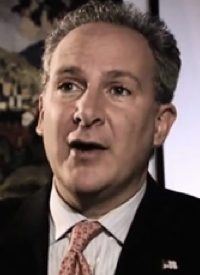
The independent British exposé film Overdose: The Next Financial Crisis released last spring has been made available to Internet viewers on YouTube for free. The documentary provides a valuable warning for Americans that the real estate bubble/bust is small compared with the current bailout bubble being built up with government “stimulus” money and practically zero percent interest rates manipulated by the Federal Reserve Bank.
The video can be watched in its entirety here:
The film is based upon the Swedish-American scholar Johan Norberg’s 2009 book Financial Fiasco. Norberg, who narrated the video, is a freelance journalist and an adjunct scholar at the Cato Institute.
The video explains in detail how the housing bubble was created, citing Austrian economists such as Peter Schiff and Gerald Celente who accurately predicted the housing bubble. It also explains why the next bubble will be worse, and global, rather than just U.S.-based.
Norberg, Schiff, and Celente’s views clash sharply with the Keynesian economic theorists’ claims that the economy is recovering and housing is once again a “bargain.” One example of this is the New York Times for September 1, which published an op-ed column by Wellesley University Economics Professor Karl E. Case, who claimed that “housing has perhaps never been a better bargain, and sooner or later buyers will regain faith, inventories will shrink to reasonable levels, prices will rise and we’ll even start building again.” Case argued that housing is once again a valuable investment: “But for people with a more realistic version of the American dream, buying a house now can make a lot of sense. Think of it as an investment.”
Case co-authored the Standard & Poor’s Case-Shiller housing index with celebrated Keynesian economist Robert Shiller. Case claims that the housing market will recover, even though his co-author Shiller notes that 90 percent of the U.S. housing market is currently subsidized by the federal government.
Keynesians like Case and Shiller have no explanation for the causes of the bubbles, and their only “solution” involves bigger government. While Case and Shiller were among the few Keynesians who predicted the housing bubble boom-bust, Shiller himself argues that there was no real cause for the bubble-bust cycle other than popular mass hysteria. “You ask what would be the trigger,” Shiller told an Australian television station earlier this year. “There is no clear trigger for any of the major financial crises. You talk about the Asian financial crisis, you talk about the Great Depression, there is no clear trigger for any of these things. It ultimately comes from people watching the markets, seeing the prices change, and then changing their opinions, and there there is a contagion that drives the economy into a difficult period for a while.”
Economics to Keynesians is not a science of human nature. Rather, the boom-bust cycle is entirely psychological rather than physical. “It works like a feedback mechanism,” Shiller observes. “It’s kind of like a social epidemic.”
The value of Overdose is that it explains why the bubble is being built up, and how Americans can prevent making the impact of the inevitable bust worse, rather than simply explaining that a bubble is happening and that it must eventually pop.
Update September 7: The publisher — Journeyman Pictures — has removed the free listing of this valuable video from YouTube, and it is now only available on a pay-per-view basis from the Journeyman Pictures website.
Thumbnail photo: Peter Schiff in Overdose



